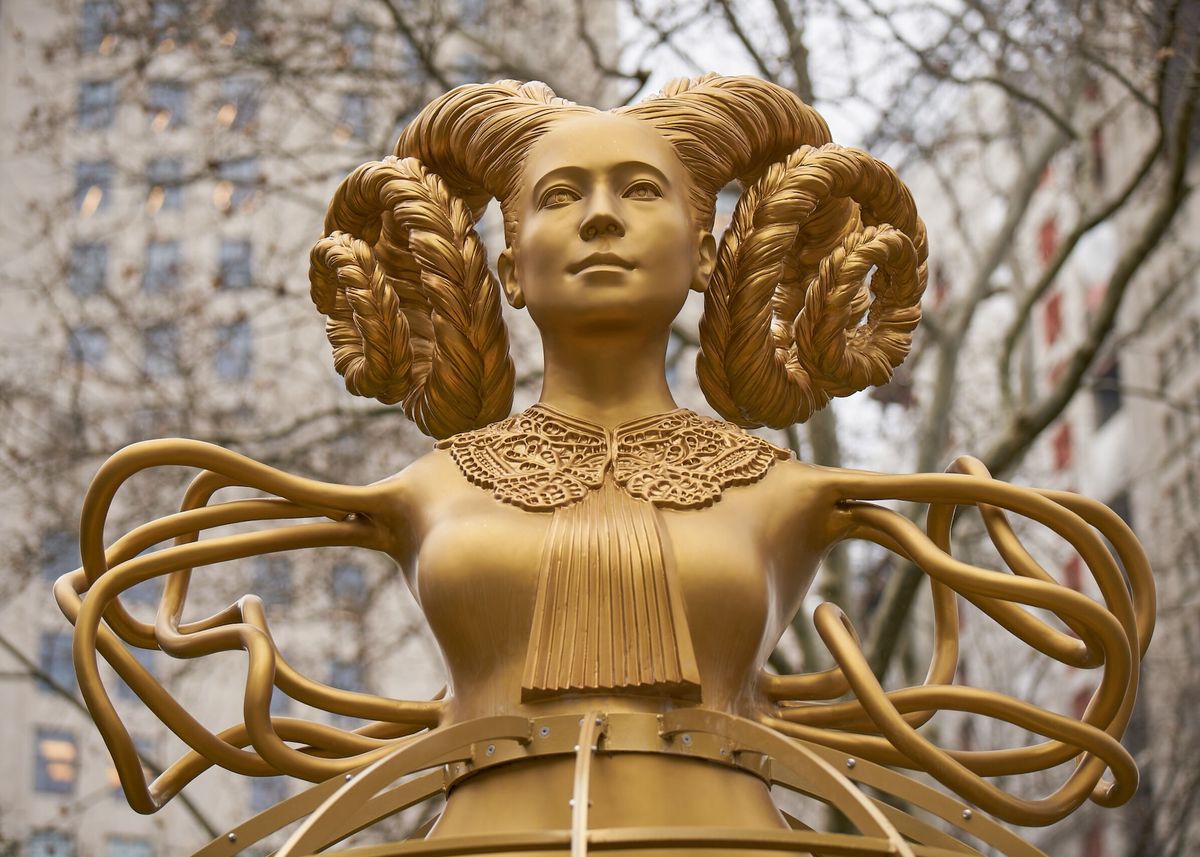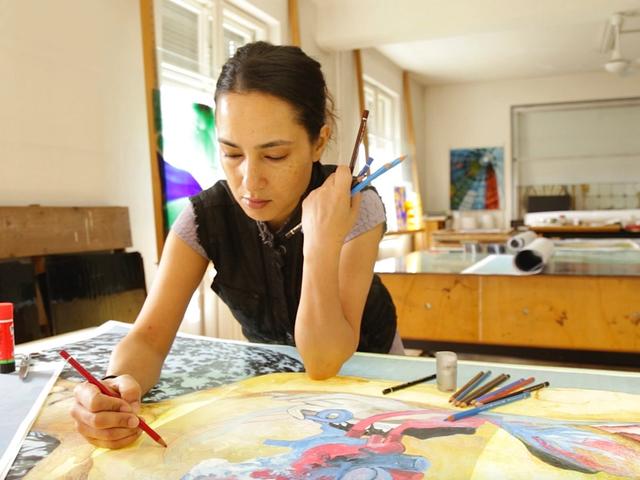A celebration and artist talk organised for the opening of a temporary exhibition of work by the Pakistani American artist Shahzia Sikander at the University of Houston (UH) have been cancelled after an anti-abortion group threatened to protest the events. In an exclusive statement to The Art Newspaper, Sikander voices her disappointment in the decision, saying: "Art should be about discourse and not censorship. Shame on those that silence artists."
The show, Havah…to breathe, air, life (28 February–31 October), travels to Houston from New York, where it debuted last year with a pair of sculptures honouring women, Witness and NOW, installed in Madison Square Park and at a nearby courthouse. But the group Texas Right to Life took offence at the sculpture coming to Houston—Witness, a golden statue of a female figure with braids twisting like ram horns, a symbol of power found globally. Citing this feature, and Sikander’s previous statements that she named the other work NOW because women’s reproductive rights are now under threat after the overturning of Roe v. Wade, the group posted a petition seeking “to keep the Satanic abortion idol out of Texas” and planned to protest the opening.
A few days later, UH sent out a newsletter announcing that the opening-night events were cancelled, and issued a document on its website describing the controversy and the artist’s intention behind the works. Saying that Witness represents “the courage, fluidity and resilience of the feminine” as well as the connections between cultures and religions, it acknowledged, however, that the work was “offensive to some people”. Sikander says that UH was not in communication with her when it published the document, and that she was told the artist talk will instead take place in the fall.
There seems to be some confusion around Witness and its related sister sculpture, NOW, which remains on view on top of the Courthouse of the Appellate Division, First Department of the State of New York, in Manhattan. (The works were co-commissioned by Public Art of the University of Houston System and Madison Square Park Conservancy.) While both have curling braids, root-like appendages and lacy bibs inspired by those worn by the late Supreme Court justice Ruth Bader Ginsburg, Witness appears to levitate above a dome-like hoop skirt decorated with swirling mosaics that spell the word “havah”, which means “atmosphere” in Urdu and “Eve” in Arabic and Hebrew.
When Sikander spoke to The Art Newspaper last year about her two sculptures honouring the feminine divine, she said she saw the pieces as icons of resistance, and interpreted the word “havah” as also meaning “to change a narrative, to add some space”. As Sikander aptly pointed out at the time: “Eve is also the first law-breaker, right?”
Witness has already been installed in UH’s Cullen Family Plaza. At least one faculty member, Ognjen Miljanić, a professor of chemistry, has voiced his appreciation, tweeting that the work is “what universities should always be about”.
A second work that was meant to be in the show, Reckoning, is a 2020 video animation depicting “a graceful dance between entangled warriors, duelling within a continuously changing landscape”, according to the exhibition’s website. Through this piece, UH stated: “Sikander imparts a lesson in respectful dialogue, emphasising the timelessness of all matter and the prevailing essence of Mother Nature.” But Sikander says that, in the end, UH did not bring Reckoning on campus for display—even though the need for such respectful dialogue is clear.



